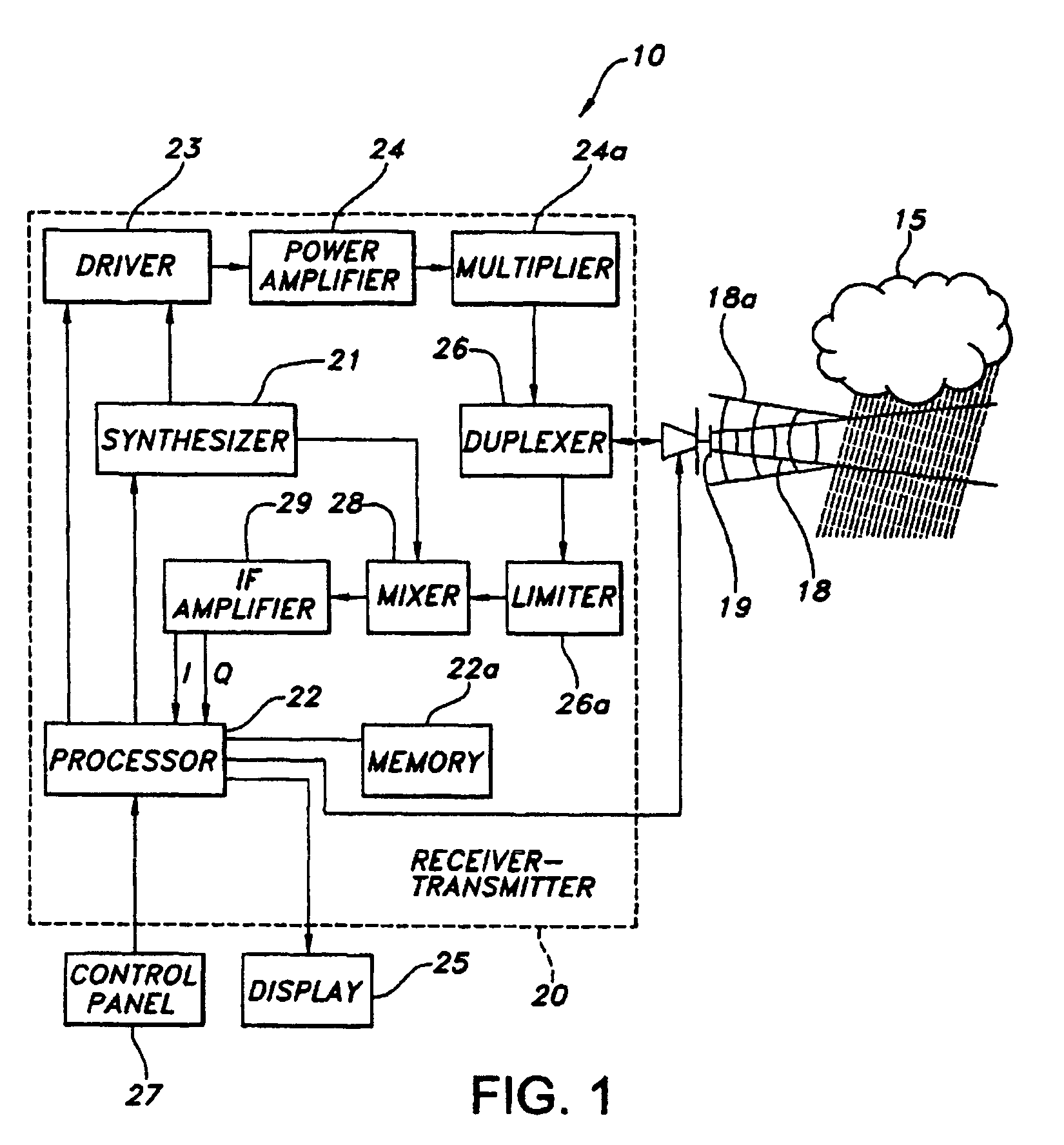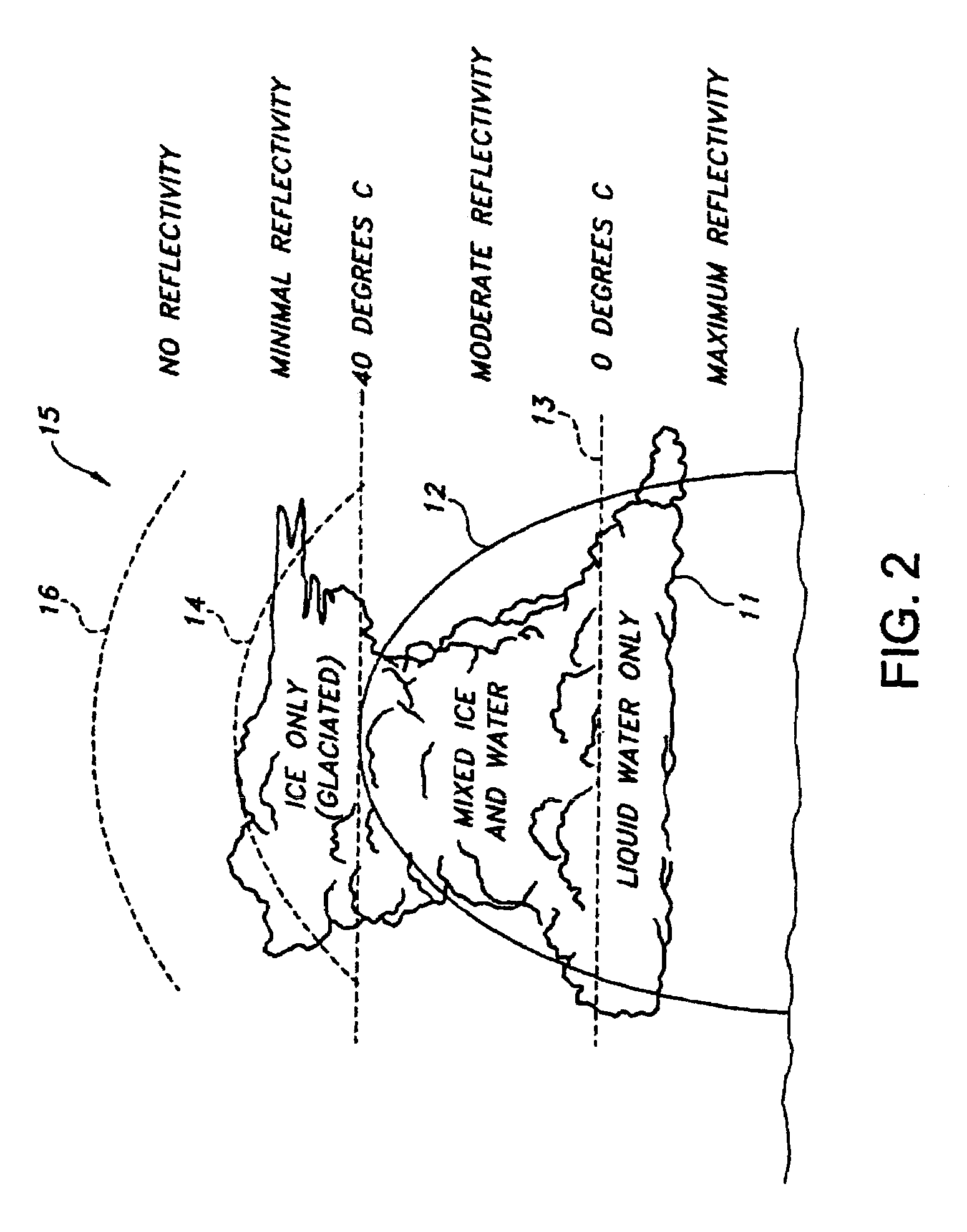Variable loop gain and resolution pulse system and method with point target editing capability
a pulse system and variable loop technology, applied in the field of weather radar systems, can solve problems such as difficult weather decision-making, system being more susceptible to receiving ground clutter, and worse problems, and achieve the effects of high resolution, high resolution, and high resolution data
- Summary
- Abstract
- Description
- Claims
- Application Information
AI Technical Summary
Benefits of technology
Problems solved by technology
Method used
Image
Examples
first embodiment
[0055]In a first embodiment shown in FIG. 6, radar return length differentiation is used to separate and edit out shorter returns from the spurious aircraft 35 from longer length weather returns in the weather radar system 10 of FIG. 1. The weather radar system 10 of FIG. 1 may intermix high resolution pulses 61, such as short pulses or compressed long pulses, and long pulses 60 as shown in FIG. 6 while scanning a weather system such as thunderstorm 15. The weather radar system 10 may transmit just the high resolution pulses 61. The receiver-transmitter 20 transmits the high resolution pulses 61 that result in high resolution return pulses 61a from the spurious aircraft 35 and high resolution return pulses 61b from the thunderstorm 15.
[0056]High resolution return pulses 61a from high resolution pulses 61 may not be used for radar display because of low loop gain due to bandwidth but may still be used to identify spurious aircraft 35. The high resolution return pulses 61a from the sp...
second embodiment
[0057]With reference to FIG. 7, system 10 is employed on an airplane 250 to provide transmit pulses 252 across a beam field 254 in accordance with a Return energy 256 from transmit pulses 252 are received by airplane 250. Radar returns 262 are from a lengthy volume target such as weather target 264. Radar return 266 is from a point or point-like target such as point target 268 that is located on the ground. Return 266 is indicative of a ground clutter point target received echo. Return 272 is associated with a weather target 274. System 10 can utilize radar return length differentiation to separate and edit out shorter ground clutter point-like or point targets, such as, target 268, from longer length weather returns, such as, returns 262 and 274.
third embodiment
[0058]In a third embodiment, areas of radar returns from the spurious aircraft 35 that are eliminated from the weather display 25 by using any of the other methods described herein can be tracked into regions where neither the original nor other methods provide detection. The spurious aircraft 35 can continue to be removed by tracking the spurious aircraft 35 into regions where it cannot be detected. As an example in FIG. 8, the antenna 19 on an aircraft 17 points the upper radar beam 30 down to receive return pulses from the weather system 15 and also receives return pulses in the upper radar beam 30 field of view. The processor 22 determines if the return pulses in the upper radar beam 30 field of view are from the spurious aircraft 35 by the size and extent of a vertical gradient return compared to the pulse returns from the weather system 15. The processor 22 identifies the pulses returns as being from the spurious aircraft 35 and accumulates tracking data of the spurious aircra...
PUM
 Login to View More
Login to View More Abstract
Description
Claims
Application Information
 Login to View More
Login to View More - R&D
- Intellectual Property
- Life Sciences
- Materials
- Tech Scout
- Unparalleled Data Quality
- Higher Quality Content
- 60% Fewer Hallucinations
Browse by: Latest US Patents, China's latest patents, Technical Efficacy Thesaurus, Application Domain, Technology Topic, Popular Technical Reports.
© 2025 PatSnap. All rights reserved.Legal|Privacy policy|Modern Slavery Act Transparency Statement|Sitemap|About US| Contact US: help@patsnap.com



